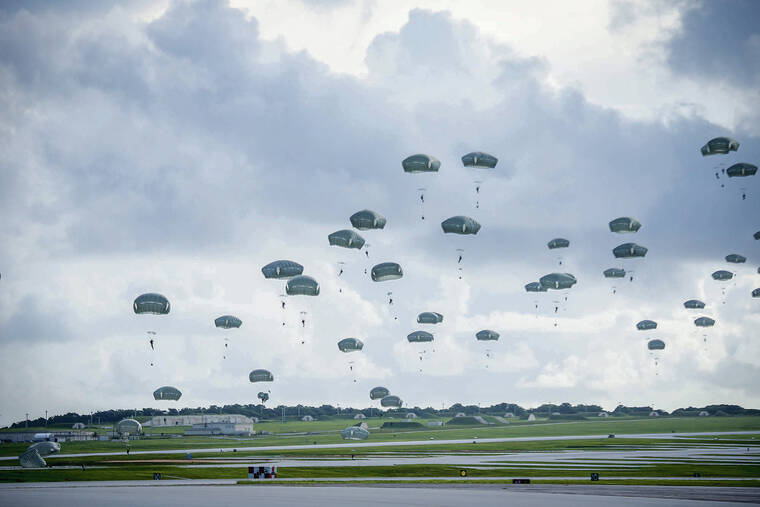Units of the 25th Infantry Division stationed in Alaska will soon be re-designated as the 11th Airborne Division, resurrecting a historic unit as the Army looks to reorganize its forces in the Pacific.
The 25th Infantry Division is based in Hawaii at Schofield Barracks, but several brigades under the mantle of the “Tropic Lightning” division are stationed in Alaska under a separate command. The Alaska-based troops ultimately answer to Hawaii-based U.S. Army Pacific and will continue to under the reorganization.
“We’re not adding or subtracting force structure,” Army Secretary Christine Wormuth said during a hearing of the Senate Armed Services Committee held last week. “It’s really sort of more of a new sense of common identity for the soldiers up there.”
Troops in Alaska sit at the crossroads of the Arctic and the Pacific and are trained to operate in both. In summer 2020 members of the 25th Infantry’s 4th Infantry Brigade Combat Team, currently the only airborne unit in the Pacific region, conducted a surprise rapid deployment exercise to Guam, parachuting troops into Andersen Air Force Base on short notice.
According to a recent news release issued by U.S. Sen. Dan Sullivan, R-Alaska, who sits on the Armed Services Committee, the 25th Infantry Division’s 1st Brigade Combat Team, based at Fort Wainwright, and 4th Brigade Combat Team, at Elmendorf-Richardson, will be re-designated as the 1st and 2nd Brigade Combat Teams of the newly formed 11th
Airborne division.
Alaska has received stepped-up attention from military planners and analysts lately. Pacific and Arctic issues have also come
to converge in unexpected ways as melting ice caps open up new trade routes and areas rich in oil and minerals that China and Russia have expressed
interest in.
But Alaska-based Army units have historically received less funding than others, with many units still using older equipment the Army intends to phase out.
Also, members of the Alaska based-25th Infantry Division joke about wearing their Tropic Lightning patches as they train in the cold Alaska winter and have expressed frustration that faraway commanders seem to pay little attention to what they’re doing up north and give them equipment mismatched for their mission.
Lately, Alaska Army bases have had the highest suicide rates in the service, and they have been rising since 2019. Seven soldiers died by suicide in the state in 2020, and that number increased to 11 in 2021, a figure that excludes six deaths still under investigation.
In April the Government Accountability Office released a report that concluded that troops stationed in Hawaii, Alaska and several other overseas installations defined as “remote” appeared to be at higher risk of attempting suicide than those stationed on the mainland.
“One of the things we’ve found that we think is contributing to what we’ve found in Alaska is that some soldiers there don’t feel like they have a sense of identity or purpose around why they’re stationed there,” said Wormuth.
By explicitly differentiating them from the Schofield-based 25th Infantry Division, Army leaders hope it will help give them a stronger sense of mission and identity. But even as it separates them from the Hawaii-based unit, the new title reinforces their role of straddling the Pacific and the Arctic.
Putting them under the banner of the 11th Airborne Division invokes the history of the Army’s only airborne unit that fought in the Pacific theater during World War II. The 11th Airborne Division fought in the Philippines, participating in the bloody battle for Manila and after the war in the U.S. occupation of Japan. It was deactivated in 1965.
Gen. James McConville, chief of staff of the Army, told lawmakers that the change would tap into “great history and heritage, and that means a lot to
soldiers.”
Wormuth also told the committee that the Army will “surge” mental health providers and resources to Alaska bases in response to suicides. “That will be a six-month surge, and we will be doing a 100% mental health check of every U.S. Army Alaska soldier,” she said.

